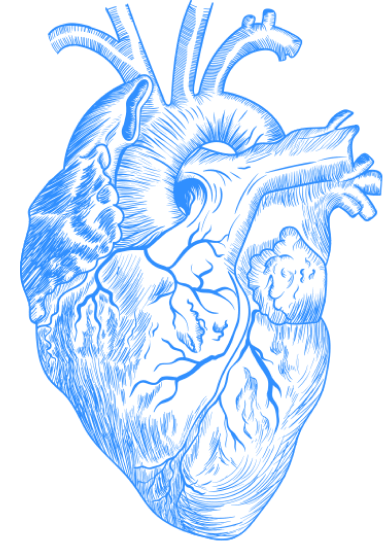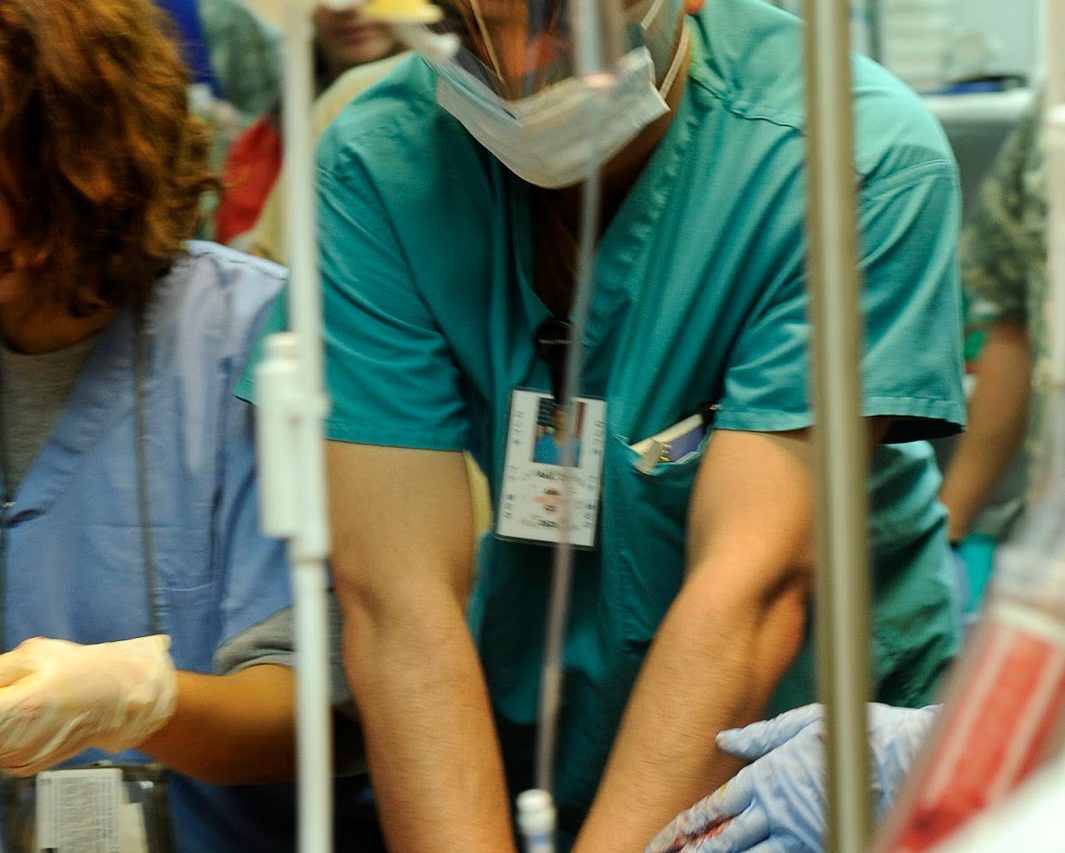
With what strife and pains we come into the world we know not, but ’tis commonly no easy matter to get out of it.
—Sir Thomas Browne, Religio Medici
I wasn’t the first to arrive in her room. The resident had already started the code, and nurses, physicians, and medical students crowded around her bed, performing CPR. The patient, a woman in her sixties, bore the physical scars of many life-saving interventions for deadly issues ranging from heart attacks to strokes to blood clots in her lungs. Six different IV bags with medications hung on poles on either side of her bed. A tube stuck out from her neck and was connected to a breathing machine. Otolaryngologists (specialists in conditions of the nose, ear, and throat) created a tracheotomy for her months ago, cutting an opening through her neck because she could not breathe properly through her mouth.
This was all I knew when I walked up to her bed, where ten physicians and nurses ran through the protocol necessary for restarting the patient’s heart. In addition to defibrillation to shock the heart back into rhythm, physicians give epinephrine to augment the effects of CPR. Epinephrine raises blood pressure by constricting blood vessels, thus increasing the flow of blood into the brain and the heart. And, it binds to beta-1 receptors in the heart, improving the heart’s ability to contract.
A well-run protocol, or code, has a rhythm: Epinephrine is given every 3 to 5 minutes, chest compressions are performed thirty times for every two breaths, the heart is shocked at the stop of compressions, and then we start over from the beginning. If there is a competent leader, then despite the chaos of human bodies crowding around the spectacle of death, opening drawers for medications, and thumping on the patient’s chest, there is still order, a pattern, a method, a purpose.
 |
| Wikimedia Commons |
When the resident doing chest compressions tired out, she shoved me to take her place the next time around. Chest compressions are intense, both emotionally and physically, and one tires easily. So we cycle in and out — we compress for as long as our bodies allow and then make way for a colleague who is next in line. I stepped up and began my compressions. The compressor must replicate the beat of the patient’s heart. If you go too fast, the heart does not have time to fill and you don’t pump blood to the brain; too slow, and the brain is deprived of oxygen and your compressions are useless.
The patient’s eyes looked up at me as I pounded my palms onto her sternum rhythmically and her whole body shook. Still open, a thin glassy film covered her eyes, clouding the stuff of life that normally emanates from a human’s gaze. Feeling uneasy as the object of her empty stare, I looked up at the TV: two pop singers were apparently at war on Twitter.
At some point — I can’t remember how early or late in the process this occurred — the patient seemed to gasp for air. She growled and gurgled, desperately reaching for the elemental gas which we take for granted every time we inhale. This may have been her agonal breathing, a process that some experience on their way to death. The late Dr. Sherwin Nuland, a surgeon and writer, described this in his book How We Die: “The adjective agonal is used by clinicians to describe the visible events that take place when life is in the act of extricating itself from protoplasm too compromised to sustain it any longer.” He continues,
The apparent struggles of the agonal moments are like some violent outburst of protest arising deep in the primitive unconscious, raging against the too-hasty departure of the spirit; no matter its preparation by even months of antecedent illness, the body often seems reluctant to agree to the divorce. In the ultimate agonal moments, the rapid onset of final oblivion is accompanied by the cessation of breathing or by a short series of great heaving gasps…. (p. 122)
Indeed, this is what the patient seemed to be experiencing. But was it? One resident tore open a drawer, found a thin, long, hollow tube and connected it to the suction machine on the wall. Perhaps, he theorized, the patient had a mucus plug in her airway. In patients with tracheotomies, the air bypasses the mouth which normally cleans and moistens the air we breathe. In response, the patient’s body produces more mucus, which accumulates and blocks the flow of oxygen into the lungs. This could be an easily reversible cause of the patient’s sudden deterioration.
The resident pushed the suctioning tube into the patient’s trachea while a nurse called the otolaryngologists who had placed the tracheotomy and were better trained to deal with it. The resident retrieved small bits of mucus out of the patient’s airway, but we still needed to continue CPR. Eventually, after many attempts to revive the patient, the attending physician looked at the clock and, realizing it had been 25 minutes since the code started, asked: “Does anyone have any other ideas as to how we can save this patient?” Met with silence, he nearly declared the time of death to be 3:32 in the afternoon. But the otolaryngologist shouted that he had finally gotten something. A long, viscous, and yellow-brown piece of mucus shot up into the suction tube and the patient gasped for air. Her heart began to beat appropriately again; her respirations normalized. Within five minutes she was back to her old self again, sick, yet alive and aware, conversant via hand motions and mouthing of words. She could now let us know that she existed. The glassy film retreated from her eyes as she was pulled back from death.
This is an uncommon circumstance. In a study in The New England Journal of Medicine in 2009, researchers studied Medicare patients 65 years of age or older who underwent CPR in U.S. hospitals from 1992 through 2005. They found that only 18.3 percent of these patients survived to discharge. Over the course of this time “the proportion of in-hospital deaths preceded by CPR increased, whereas the proportion of survivors discharged home after undergoing CPR decreased.” It seems that CPR has not gotten better, and the authors express “significant concern” that CPR has increased “during a time of more education and awareness about the limits of CPR in patients with advanced chronic illness and life-threatening acute disease,” like the patient we revived.
And yet, who can argue with the results that day? I wrote in my last post on CPR that “we rightfully value human life above all else and thus owe the patient every weapon in this battle. While the rapidity of the process may seem callous, it is essential in a last-ditch effort to stave off eternal rest. After all, what if she had been revived?” In this patient’s case she was fortunate. Yes, she was still critically ill, but perhaps this gave her more time to be with her husband, who had been visiting her for months. Maybe now she could have the conversations with her family about whether she wanted CPR done in the future if her condition worsened (she and her husband eventually decided they didn’t want any further CPR measures — this one experience was traumatic enough). Alternatively, perhaps this revival would change nothing about how she would use her time on this earth. It is not for physicians to say how she ought to use her new-found days; it is only for physicians, when appropriate, to help her grasp them.

